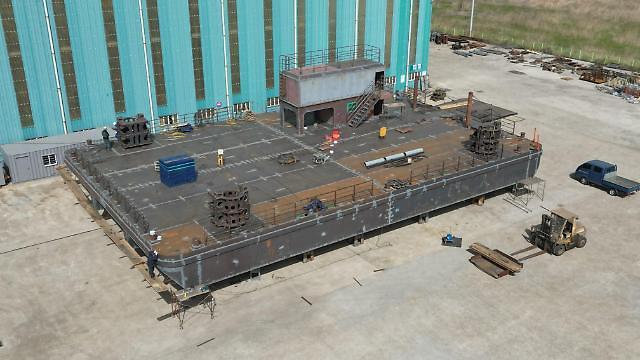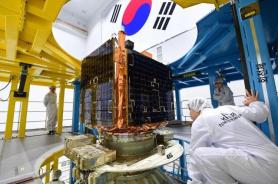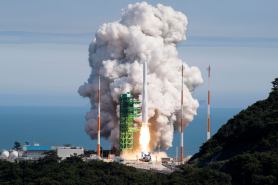
[Courtesy of Perigee]
While many space launch vehicles (SLVs) are launched from offshore launch platforms which are basically man-made islands or large-sized floating ships with a launch pad for rockets are used by governments and private companies to be far away from habitation and provide cooling and acoustic damping during launch.
SpaceX, a private SLV developer founded by Tesla founder Elon Musk, operates its own "Drone Ship" as an offshore launch platform where the company can shoot rockets into space and retrieve them. SpaceX's drone ships were used multiple times to send satellites into orbit.
Perigee said in a statement that the company signed a memorandum of understanding with the provincial government of Jeju on May 8 to cooperate in the development of governance designed to vitalize South Korea's private space technology sector and establish the country's first offshore launch pad.
Because rockets are affected by the revolution of the earth, it is more effective to fire off rockets from launch facilities that are closer to the equator. Jeju, the southernmost island with urban infrastructure, is the most ideal place for launching SLVs into space. South Korea's state launch facility is located in Goseong located along the southern coastline of the Korean peninsula.
Through decades of space technology development programs, South Korea was able to successfully launch its first Korea Space Launch Vehicle-II (KSLV-II), nicknamed "Nuri" carrying a dummy satellite into space in October 2021. However, the first rocket failed to put the satellite into orbit. The second Nuri was fired in June 2022 and succeeded in sending an actual satellite into orbit.
Innospace, a South Korean SLV developer startup successfully launched Hanbit-Test Launch Vehicle (TLV) equipped with a 15-ton-class hybrid engine from Alcantara Space Center in Brazil on March 19. Hanbit-TLV was South Korea's first SLV that was developed and launched by a private company.
Copyright ⓒ Aju Press All rights reserved.




![[K-Tech] Hanwha Aerospace nears Nuri rocket technology transfer deal](https://image.ajunews.com/content/image/2025/07/23/20250723143507887407_278_163.jpg)